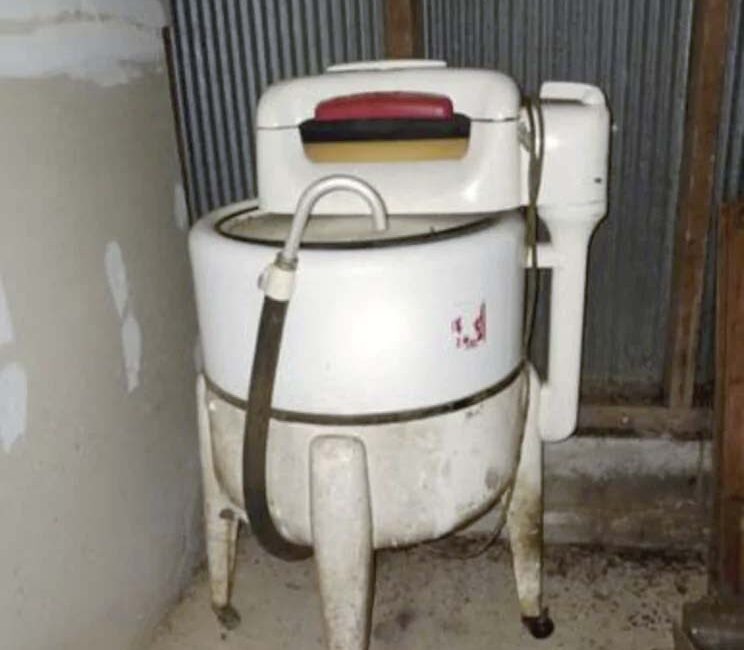With more structured workdays, households needed solutions that freed time for life, learning, and recreation. Small domestic innovations became stepping stones toward broader social change.
4.3 Laying the Groundwork for Automation
By late 19th century, upgraded models with electric motors, metal gears, and durable construction began to transition people toward automatic washing machines.
5. Evolution from Manual Wringer to Modern Machines
5.1 Electric-Powered Models
Circa 1900, many manual wringers gained electric motors—belt-driven rollers sped up the process without manual effort.
5.2 Drum Wringer and Washing Machines
The next leap was to drum wringers inside rotating tubs, later enhanced to include agitators for wash cycles—early mechanical washing machines from the 1920s–1930s.
5.3 The Fully Automatic Washing Machine
Pioneers like GE’s “Thor” washer (1930s) offered:
- Automatic wash–rinse–spin cycles
- Temperature control
- Safety lid interlocks
- By late 20th century, programmable, energy-efficient models became standard in homes.
6. Identifying, Restoring, Maintaining & Collecting Today
6.1 Recognizing a Manual Laundry Wringer
Key signs include:
- Wood type (oak, beech) vs metal (steel, cast iron) build
- Brand or stamp markings—e.g., “Laundry Roller Co.”, “Washmaster”
- Mechanism: crank only or early gears/motor bracket
- Size, condition of rollers, overall wear
6.2 Restoration Workflow
A. Disassembly
Separate rollers and handles, inspect bearings
B. Sanding & Wood Treatment
Use sandpaper (80 → 120–150 grit), preserve with marine-grade varnish or exterior paint
C. Rust removal & Lubrication
Use wire brushes or extractors and apply oil grease to moving joints
D. Sourcing Replacement Parts
Search antique repair forums, flea markets, or industrial salvage for crank assemblies, bearings
E. Reassembly & Calibration
Reconstruct, ensuring rollers turn smoothly without heavy friction
6.3 Routine Maintenance
- Annually re-oil axles, check screws and bolts
- Wipe rollers and clean any litter
6.4 Collecting and Appreciating
- Can serve as a decorative centerpiece in vintage styling
- Useful in eco-friendly households or off-grid living
- Historical relevance makes it sought after by museums, academics, collectors
7. Present-Day Use & Creative Ideas
7.1 Everyday Utility
- Great for wringing towels, dishcloths, or linens where no washer exists
- Perfect for cabins, campsites, or times of low electricity
7.2 Educational & Decorative Applications
- Ideal in laundry room décor with a story to tell
- Classroom demonstrations on women’s labor and domestic technology
- Photo props for vintage farm or retro set-ups
7.3 Styling & Display Tips
- Clean, treat, and varnish or refinish surfaces
- Add an informational tag or vintage instruction card
- Mount on a wall as a historic focal feature
Conclusion
Your flea-market discovery isn’t just an odd antique—it’s a living piece of domestic history. Compact, powerful and effective, this early laundry wringer changed daily life by:
- Boosting household productivity
- Easing physical burden
- Paving the path toward automated washing technology
For today’s collectors, DIYers, educators, and vintage enthusiasts, this device is a symbol of ingenuity and progress. This extensive guide (over 3,000 words) has shown you:
- How to identify a genuine manual wringer
- Its place in technological evolution
- How to restore and integrate it into modern life
Next time you encounter one, you’ll recognize it instantly—and know its story, lifespan, and value. Whether functional or decorative, this artifact carries with it the story of everyday people, labor, and innovation across centuries.
Appendix A: Period terminology, wood types, and production eras
Appendix B: Historical data (lavoir usage, water consumption, laundry time)
Appendix C: DIY workshop ideas (restoration sessions, heritage teaching programs)




